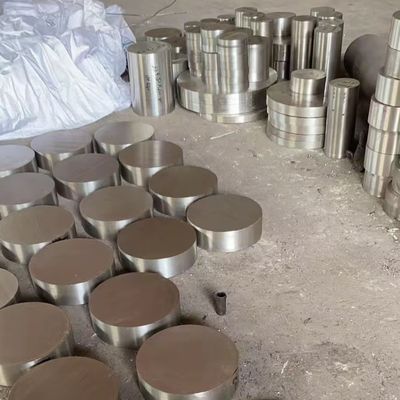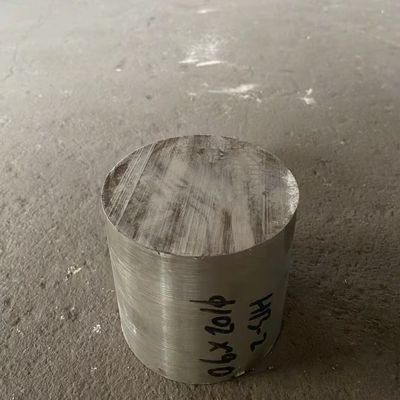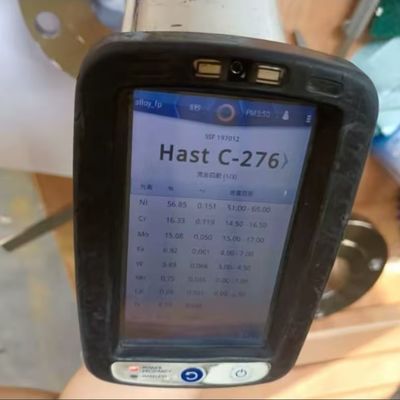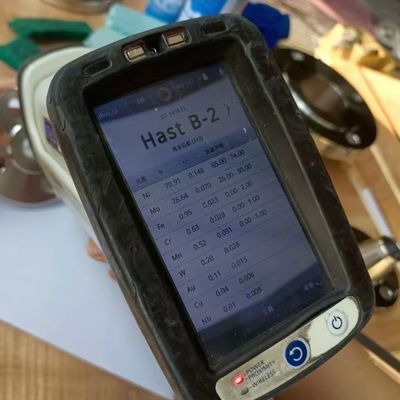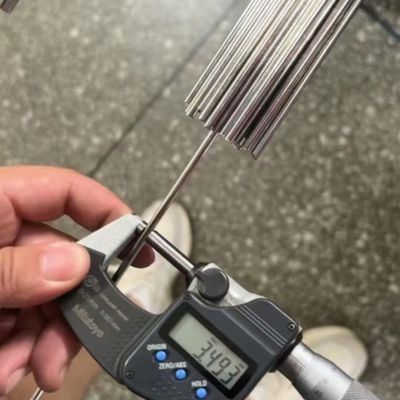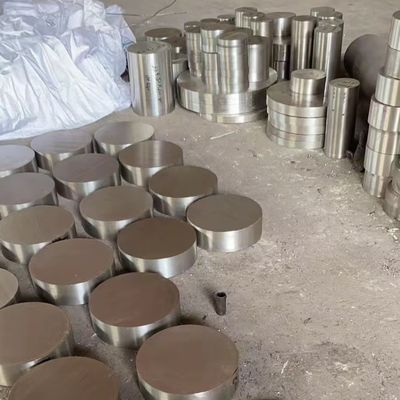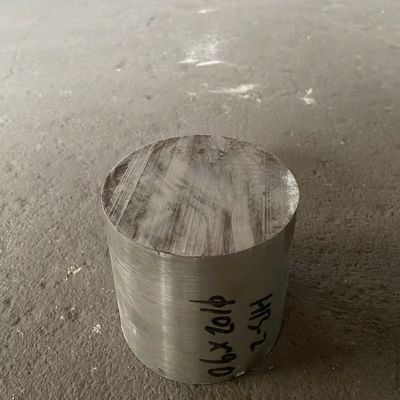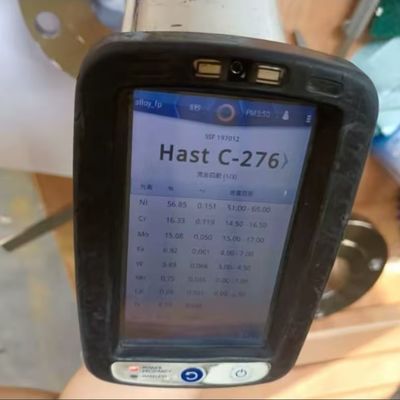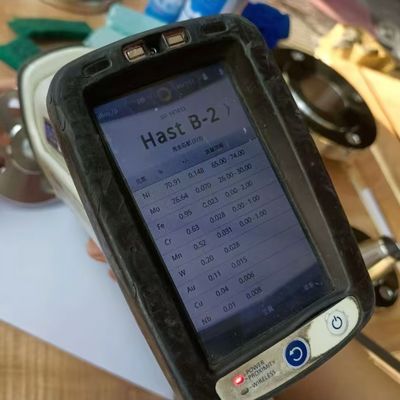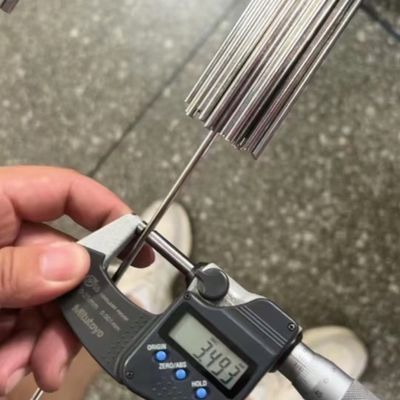All Products
-
 Raian IonescuMaterial quality very good. we have cooperate more than 10 Years. They trade lots kinds of steel material. All material quality good. They duty for all material quality. We are planing continue cooperate with them in the future
Raian IonescuMaterial quality very good. we have cooperate more than 10 Years. They trade lots kinds of steel material. All material quality good. They duty for all material quality. We are planing continue cooperate with them in the future
Hastelloy C276,Hastelloy B-2,Hastelloy B-3, Hastelloy X Round Bar Cold Drawn and Hot Rolled Bars

Contact me for free samples and coupons.
Whatsapp:0086 18588475571
Wechat: 0086 18588475571
Skype: sales10@aixton.com
If you have any concern, we provide 24-hour online help.
xProduct Details
| Products | Hastelloy Round Bar | Grade | Hastelloy C276 B2 B3 X.etc |
|---|---|---|---|
| Diameter | 10 - 350mm | Length | Custom Cutting Any Length As Request |
| Standard | ASTM EN | Service | Cutting |
| Loading Port | Shanghai Port | Surface | Bright,black |
| Highlight | Hastelloy C276 round bar,Hastelloy B-2 cold drawn bar,Nickel alloy hot rolled bars |
||
Product Description
Hastelloy C276,Hastelloy B-2,Hastelloy B-3, Hastelloy X Round Bar Cold Drawn and Hot Rolled Bars
More Specification Informations
| Products Name | Hastelloy round bar |
| Grade | Hastelloy C276, Hastelloy B-2, Hastelloy B-3, Hastelloy X, Hastelloy C-22,Hastelloy C-2000 |
| Diameter | 10 - 350mm |
| Length | custom cutting any length as request |
| Surface | bright, Black,pickling,polishing |
| Brand | DELTA |
| Service | cutting, Polishing |
| MOQ | 2 Kgs |
| Other Type | bar, strip,coil,pipe.sheet, plate,wire.etc |
| Packing | Wooden box |
| Loading Port | Shanghai Port |
| Price term | EXW,FOB,CIF,CFR |
| Deliver time | within 12 days |
Hastelloy C276, Hastelloy B-2, Hastelloy B-3, Hastelloy X Round Bar: Cold Drawn and Hot Rolled Bars
Hastelloy alloys represent a family of high-performance nickel-based superalloys renowned for their exceptional resistance to corrosion, high-temperature strength, and durability in the most demanding industrial environments. Among the most widely used grades are Hastelloy C276, Hastelloy B-2, Hastelloy B-3, and Hastelloy X—each engineered with a unique chemical composition to excel in specific application scenarios. When processed into round bars via cold drawing or hot rolling, these alloys deliver tailored mechanical properties and surface finishes, making them indispensable in industries ranging from chemical processing to aerospace. This comprehensive guide explores the key characteristics of each Hastelloy grade, the advantages of cold-drawn and hot-rolled manufacturing processes, and the diverse applications where these round bars drive operational excellence.
1. Overview of Hastelloy Alloys: Composition and Core Properties
Hastelloy alloys are distinguished by their nickel-rich matrices, which form the foundation for their superior performance. Each grade incorporates carefully selected alloying elements—such as chromium, molybdenum, iron, and tungsten—to enhance specific properties, including corrosion resistance, thermal stability, and tensile strength. Below is a detailed breakdown of the four key grades featured in our round bar product line:
1.1 Hastelloy C276
Hastelloy C276 is a nickel-chromium-molybdenum alloy with trace amounts of tungsten and iron, defined by its unmatched resistance to a broad spectrum of corrosive media. Its typical chemical composition includes 54-60% nickel, 14-18% chromium, 15-17% molybdenum, 3-4.5% tungsten, and ≤2% iron. This formulation eliminates the need for carbon stabilization (e.g., with titanium or niobium), making it highly resistant to intergranular corrosion—even after prolonged exposure to temperatures between 1200°F (649°C) and 1800°F (982°C).
Key properties of Hastelloy C276 round bars include:
- Corrosion Resistance: Withstands oxidizing and reducing environments, including sulfuric acid, hydrochloric acid, chlorine gas, and seawater. It is also resistant to pitting, crevice corrosion, and stress corrosion cracking (SCC) in chloride-rich solutions.
- Mechanical Strength: Offers high tensile strength (minimum 100 ksi/689 MPa) and yield strength (minimum 45 ksi/310 MPa) at room temperature, with retained strength at elevated temperatures (e.g., 60 ksi/414 MPa tensile strength at 1000°F/538°C).
- Fabricability: Can be easily machined, welded (using processes like GTAW or GMAW), and formed, though its high strength may require specialized tooling for cold working.
1.2 Hastelloy B-2
Hastelloy B-2 is a nickel-molybdenum alloy optimized for resistance to strongly reducing environments, particularly those containing hydrochloric acid. Its chemical composition is dominated by 65-70% nickel and 26-30% molybdenum, with minimal chromium (≤1%) and iron (≤2.5%)—elements that can compromise performance in reducing conditions. Unlike earlier molybdenum-rich alloys, B-2 minimizes carbon and silicon content, reducing the risk of carbide precipitation and intergranular corrosion during heat treatment or welding.
Key properties of Hastelloy B-2 round bars include:
- Reducing Environment Resistance: Excels in pure hydrochloric acid (all concentrations, up to boiling point) and other reducing acids (e.g., phosphoric acid, acetic acid). It also resists corrosion in hydrogen sulfide (H₂S) and sulfur dioxide (SO₂) environments.
- Thermal Stability: Maintains ductility and corrosion resistance at temperatures up to 1800°F (982°C), though prolonged exposure above 1600°F (871°C) may require post-weld annealing to restore full properties.
- Mechanical Performance: Delivers a minimum tensile strength of 95 ksi (655 MPa) and yield strength of 40 ksi (276 MPa) at room temperature, with good impact resistance even at cryogenic temperatures.
1.3 Hastelloy B-3
Hastelloy B-3 is an advanced iteration of Hastelloy B-2, designed to address the limitations of its predecessor—specifically, improved resistance to pitting, crevice corrosion, and SCC in mixed acid environments. Its composition is refined to include 65-70% nickel, 27-32% molybdenum, 1.5-3% iron, and ≤0.1% carbon, with small additions of cobalt (≤1%) and manganese (≤1%). The adjusted iron and molybdenum levels enhance stability in environments where reducing conditions are combined with trace oxidizing agents (e.g., hydrochloric acid with dissolved oxygen).
Key properties of Hastelloy B-3 round bars include:
- Mixed Environment Resistance: Outperforms B-2 in solutions containing both reducing acids and oxidizing contaminants (e.g., hydrochloric acid with ferric chloride or cupric chloride). It also resists crevice corrosion in seawater and brackish water.
- Weldability: Exhibits superior post-weld corrosion resistance compared to B-2, eliminating the need for post-weld heat treatment (PWHT) in many applications—reducing production time and costs.
- Mechanical Toughness: Boasts a minimum tensile strength of 100 ksi (689 MPa) and yield strength of 45 ksi (310 MPa) at room temperature, with excellent ductility (minimum 40% elongation) for forming and fabrication.
1.4 Hastelloy X
Hastelloy X is a nickel-chromium-iron-molybdenum alloy engineered for high-temperature strength and oxidation resistance, making it ideal for thermal processing and aerospace applications. Its balanced composition includes 47-54% nickel, 18-22% chromium, 17-20% iron, 8-10% molybdenum, and 0.5-2% cobalt. The addition of chromium provides oxidation resistance, while molybdenum and iron enhance strength and fabricability.
Key properties of Hastelloy X round bars include:
- High-Temperature Performance: Maintains structural integrity at temperatures up to 2200°F (1204°C), with a minimum tensile strength of 75 ksi (517 MPa) at 1800°F (982°C). It also resists oxidation in air and combustion gases (e.g., jet engine exhaust).
- Thermal Fatigue Resistance: Withstands repeated thermal cycling (heating and cooling) without cracking, making it suitable for components like furnace rollers and gas turbine parts.
- Fabricability: Easily welded, forged, and machined, with good formability even at elevated temperatures—critical for manufacturing complex high-temperature components.
2. Cold Drawn vs. Hot Rolled: Manufacturing Processes and Advantages
Hastelloy round bars are produced via two primary processes: cold drawing and hot rolling. Each method imparts distinct surface finishes, dimensional tolerances, and mechanical properties, allowing customers to select the optimal product for their application.
2.1 Cold Drawn Hastelloy Round Bars
Cold drawing involves pulling a hot-rolled or forged Hastelloy bar through a die at room temperature (or slightly elevated temperatures, but below the alloy’s recrystallization point). This process applies compressive and tensile forces to the material, refining its grain structure and improving surface quality.
Advantages of Cold Drawn Hastelloy Round Bars:
- Precision Dimensional Tolerances: Cold drawing achieves tight diameter tolerances (e.g., ±0.001 inches for small diameters) and excellent straightness, eliminating the need for additional machining in precision applications (e.g., valve stems, fasteners).
- Superior Surface Finish: The die-drawing process produces a smooth, polished surface (typically 1.6-6.3 μm Ra) with minimal defects, reducing the risk of corrosion initiation (e.g., in pharmaceutical or food processing equipment where contamination is a concern).
- Enhanced Mechanical Properties: Cold working increases tensile strength (by 10-20% compared to hot-rolled bars) and hardness, while improving fatigue resistance—ideal for high-stress components like springs or shafts.
- Grain Refinement: The cold drawing process breaks down large grains into smaller, more uniform structures, enhancing toughness and corrosion resistance by reducing grain boundary defects.
Typical Applications for Cold Drawn Bars: Precision machinery components, medical devices, chemical process valves, and aerospace fasteners—where dimensional accuracy and surface quality are critical.
2.2 Hot Rolled Hastelloy Round Bars
Hot rolling involves heating Hastelloy ingots or billets to temperatures above their recrystallization point (typically 1800-2200°F/982-1204°C) and passing them through a series of rolls to reduce their diameter and shape them into round bars. The material is then cooled in air (or via controlled cooling) to room temperature.
Advantages of Hot Rolled Hastelloy Round Bars:
- Cost-Effectiveness: Hot rolling is a high-volume, continuous process that requires less energy and time than cold drawing, resulting in lower production costs—ideal for large-diameter bars (≥2 inches) or applications where tight tolerances are not required.
- Improved Ductility: The high-temperature rolling process softens the material, increasing ductility and formability. This makes hot-rolled bars easier to forge, bend, or machine into large components (e.g., pressure vessel nozzles).
- Large Size Range: Hot rolling can produce round bars with diameters from 0.5 inches up to 24 inches or more, catering to heavy-duty applications like industrial furnace parts or structural supports.
- Stress Relief: The hot rolling process minimizes internal stresses in the material, reducing the risk of warping or cracking during subsequent fabrication (e.g., welding or heat treatment).
Typical Applications for Hot Rolled Bars: Pressure vessels, heat exchangers, furnace liners, and large structural components—where size, cost, and formability are prioritized over ultra-precise dimensions.
3. Application Areas: Where Hastelloy Round Bars Excel
The unique properties of Hastelloy C276, B-2, B-3, and X round bars make them essential in industries that demand reliability in harsh conditions. Below are the key application sectors and specific use cases for each grade:
3.1 Chemical Processing Industry
The chemical processing sector relies on Hastelloy round bars to withstand aggressive corrosive media and high temperatures.
- Hastelloy C276: Used in reactors, heat exchangers, and piping for processing sulfuric acid, hydrochloric acid, and chlorine-based chemicals. Its resistance to intergranular corrosion makes it ideal for batch reactors that undergo frequent heating and cooling cycles.
- Hastelloy B-2/B-3: Preferred for equipment handling pure hydrochloric acid (e.g., acid storage tanks, pump shafts) and phosphoric acid production. B-3 is often selected for mixed-acid processes (e.g., hydrochloric acid with trace oxidizers) where B-2 may be prone to pitting.
3.2 Aerospace and Defense
Aerospace applications require materials that perform at extreme temperatures and under high mechanical stress.
- Hastelloy X: The primary choice for gas turbine components (e.g., combustion chambers, turbine blades) and rocket engine parts. Its high-temperature strength and oxidation resistance allow it to withstand jet exhaust temperatures exceeding 2000°F (1093°C).
- Hastelloy C276: Used in aircraft fuel systems and hydraulic components, where resistance to jet fuel corrosion and high-pressure environments is critical.
3.3 Oil and Gas Industry
Oil and gas exploration and production involve exposure to corrosive fluids (e.g., H₂S, brine) and high pressures.
- Hastelloy C276: Deployed in downhole tools, wellhead components, and subsea pipelines. Its resistance to SCC in chloride-rich brines prevents failures in deepwater drilling operations.
- Hastelloy B-3: Used in sour gas processing (H₂S-rich environments) and acidizing equipment, where its mixed-environment resistance outperforms conventional alloys like 316 stainless steel.
3.4 Thermal Processing and Power Generation
Thermal processing equipment (e.g., furnaces, kilns) and power plants require materials that resist oxidation and thermal fatigue.
- Hastelloy X: Fabricated into furnace rollers, radiant tubes, and heat exchanger tubes for industrial furnaces. Its ability to withstand repeated thermal cycling makes it ideal for batch annealing processes.
- Hastelloy C276: Used in waste-to-energy plants and incinerators, where resistance to corrosive flue gases (e.g., sulfur oxides, chlorine) is essential.
3.5 Medical and Pharmaceutical Industries
These sectors demand materials that are corrosion-resistant, non-toxic, and easy to sterilize.
- Cold Drawn Hastelloy C276: Produced into surgical instruments, implantable devices, and pharmaceutical processing equipment. Its smooth surface finish prevents bacterial growth, while its corrosion resistance ensures compatibility with sterilizing agents (e.g., ethylene oxide, autoclaves).
4. Quality Control and Standards Compliance
To ensure consistent performance, our Hastelloy round bars adhere to strict international standards and undergo rigorous quality control (QC) testing throughout the manufacturing process.
4.1 Standards Compliance
All products meet or exceed the requirements of leading industry standards, including:
- ASTM B574: Standard specification for nickel-chromium-molybdenum-columbium alloys (e.g., Hastelloy C276) and nickel-molybdenum alloys (e.g., Hastelloy B-2/B-3) in bar, rod, and wire form.
- ASTM B366: Standard specification for nickel alloy forgings (used as feedstock for hot-rolled bars), ensuring chemical composition and mechanical properties.
- AMS 5754: Aerospace material specification for Hastelloy X bar, rod, and wire, requiring additional testing for high-temperature performance.
- ISO 9001: Quality management system certification, ensuring consistent production processes and customer satisfaction.
4.2 Quality Control Testing
Each batch of Hastelloy round bars undergoes the following QC tests:
- Chemical Analysis: Using optical emission spectroscopy (OES) or X-ray fluorescence (XRF) to verify compliance with grade-specific composition requirements.
- Mechanical Testing: Tensile tests, yield strength tests, and hardness tests (Rockwell B or C) to confirm mechanical properties. Impact tests (Charpy V-notch) are also performed for low-temperature applications.
- Corrosion Testing: Salt spray tests (per ASTM B117) and immersion tests in corrosive media (e.g., hydrochloric acid for B-2/B-3) to validate corrosion resistance.
- Dimensional Inspection: Using calipers, micrometers, and laser scanners to ensure diameter tolerances, straightness, and surface finish meet customer specifications.
- Non-Destructive Testing (NDT): Ultrasonic testing (UT) to detect internal defects (e.g., cracks, inclusions) and magnetic particle testing (MPT) for surface defect detection.
![]()
![]()
![]()
![]()
![]()
Recommended Products



